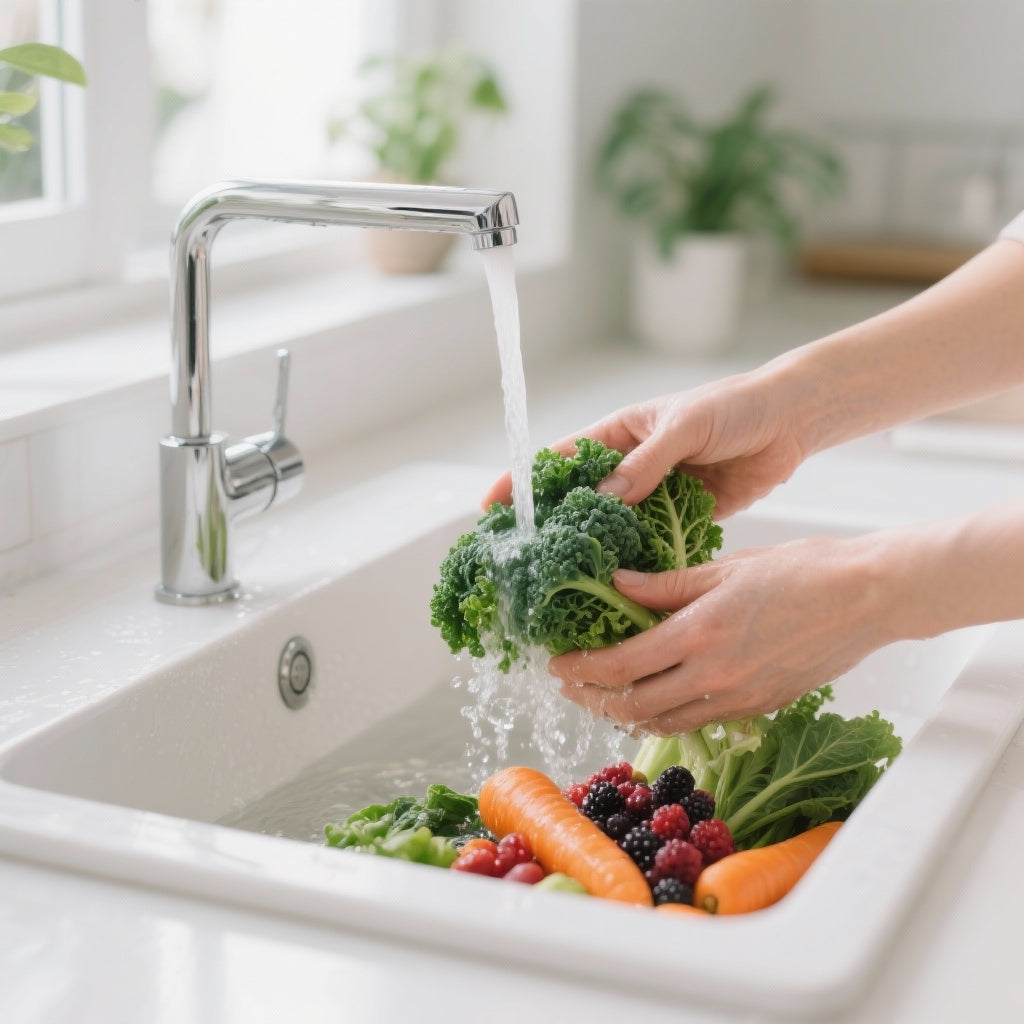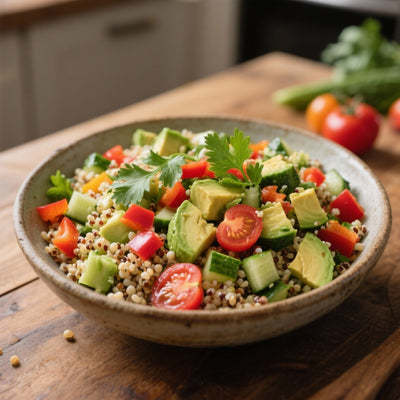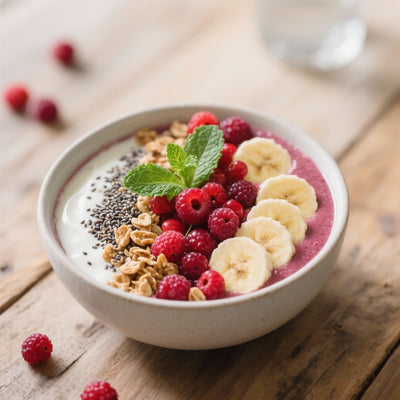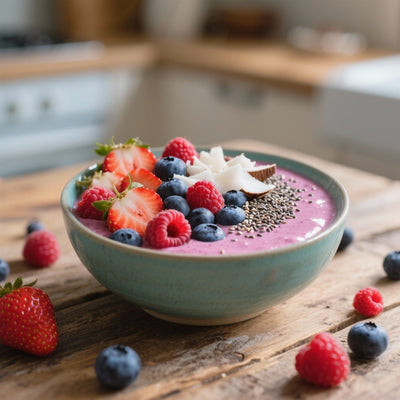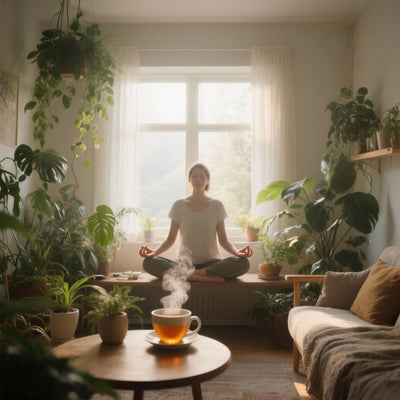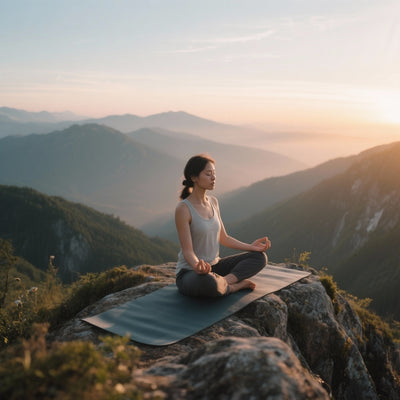Top 7 environmental toxins and how to protect yourself naturally
Introduction to environmental toxins
We live in a modern, practical, and efficient world. But this comfort comes at an invisible cost: constant exposure to a cocktail of chemicals whose effects on our health are only beginning to be understood. These environmental toxins are hidden everywhere: in the air we breathe, the water we drink, the food we eat, and even in the products we apply to our skin.
The problem? Accumulation. Day after day, these compounds infiltrate our bodies, potentially disrupting our hormonal balance, weakening our immune system, and contributing to unexplained chronic fatigue. Feeling overwhelmed by this invisible threat is a normal reaction. But the good news is that we have the power to take action.
This guide isn't meant to alarm you, but to give you the tools to regain control. We'll demystify the 7 most common toxin families and offer simple, practical, and natural strategies to significantly reduce your exposure. Get ready to transform your environment into a sanctuary of well-being.
1. Pesticides: the enemy on our plate
Pesticides are chemical substances used in intensive agriculture to protect crops from insects and diseases. Unfortunately, they don't stay neatly on the plants and end up in our food, soil, and waterways.
Where can they be found?
Their presence is most pronounced in non-organic fruits and vegetables, particularly those with thin skins or those that are consumed whole (strawberries, spinach, apples, grapes). They are also found in cereals, legumes, and, through bioaccumulation, in certain animal products. Tap water may also contain traces.
What are the health risks?
Numerous studies link chronic exposure to pesticides to increased risks of neurological diseases, certain cancers, and fertility problems. Many are classified as endocrine disruptors , meaning they mimic or block the action of our hormones, creating chaos in our hormonal system.
How can we protect ourselves from it naturally?
- Choose organic: It's the most effective way to reduce your exposure. Focus on the "Dirty Dozen" list (the 12 most contaminated) if your budget is limited.
- Wash and scrub your food: Rinse your fruits and vegetables thoroughly. A 15-minute soak in water with added white vinegar or baking soda can help remove some of the residue.
- Peel when possible: For non-organic products such as apples or cucumbers, removing the skin helps reduce pesticide exposure.
2. Heavy Metals: Silent Poisons
Mercury, lead, cadmium, and arsenic are heavy metals that, even in very small doses, are toxic to the body. They accumulate in tissues, particularly the brain, kidneys, and liver, and are very difficult to eliminate.
Where can they be found?
The sources are multiple: large predatory fish (tuna, swordfish) which concentrate the mercury present in the oceans, old pipes and paints for lead , cigarette smoke and certain foods for cadmium , and contaminated water or rice for arsenic .
What are the health risks?
Heavy metal toxicity is primarily neurological. They can cause memory and concentration problems, irritability, and headaches. They are also implicated in more serious illnesses and can significantly weaken the immune system.
How can we protect ourselves from it naturally?
- Choose your fish: Prefer small fish at the beginning of the food chain (sardines, mackerel, anchovies) and limit the consumption of large predators.
- Filter your water: A good water filter (activated carbon, reverse osmosis) can reduce the presence of lead and other metals.
- Support detoxification: Certain foods are known to help the body chelate (bind) heavy metals, such as cilantro, garlic, and algae like chlorella and spirulina. For nutritional advice, explore our detox recipes .
"According to Public Health France, almost the entire French population is exposed to cocktails of pollutants. Reducing one's individual toxic load is no longer an option, but a necessity for long-term health."
3. Phthalates: hormonal plasticizers
Phthalates are a family of chemicals used to soften plastics (especially PVC) and as fixatives in perfumes. Their molecular structure allows them to easily migrate from products into our bodies.
Where can they be found?
They are everywhere: flexible plastic food packaging, shower curtains, children's toys, floor coverings... But a major source is often overlooked: synthetic fragrances . They are found in perfumes, deodorants, creams, laundry detergents and air fresheners.
What are the health risks?
These are powerful endocrine disruptors, particularly concerning for the male and female reproductive systems. They are linked to decreased fertility, early puberty, and birth defects.
How can we protect ourselves from it naturally?
- Avoid soft plastics: Steer clear of plastics with recycling number 3 (PVC). Opt for glass, stainless steel, or ceramic containers.
- Read cosmetic labels: Look for the phrase "phthalate-free". Be wary of the word "Parfum" or "Fragrance" in the ingredient list, which can hide hundreds of compounds, including phthalates.
- Ventilate your home: Diffuse pure essential oils instead of using scented candles or synthetic air fresheners. Discover tips for a healthy home on our lifestyle blog .
4. Bisphenol A (BPA) and its relatives
BPA is a chemical used to harden plastics (polycarbonate) and as an inner lining for cans and tins to prevent corrosion. Although its use is increasingly regulated, its substitutes (BPS, BPF) do not appear to be any safer.
Where can it be found?
It is found mainly in rigid plastic food containers (before they were banned), can linings and till receipts, where it is used as a thermal developer and passes directly through the skin.
What are the health risks?
BPA is another notorious endocrine disruptor, mimicking the action of estrogen. It is associated with metabolic disorders (diabetes, obesity), reproductive problems, and developmental disorders in children.
How can we protect ourselves from it naturally?
- Switch to glass and stainless steel: For your water bottles, storage containers and kitchen utensils, these are the safest materials.
- Opt for fresh or frozen foods: Reduce your consumption of canned goods. If you do use them, look for those labeled "BPA-free" or "BPA-free coating".
- Refuse paper receipts: Request a receipt by email or simply don't take it. Never keep it in your wallet or pockets.
5. Volatile Organic Compounds (VOCs)
VOCs are gases emitted by many everyday products. They are one of the main sources of indoor air pollution, which can be up to 5 times more polluted than outdoor air.
Where can they be found?
The list is long: paints, varnishes, glues, new furniture (chipboard), cleaning products, air fresheners, scented candles, building materials, printers...
What are the health risks?
In the short term, they can cause irritation of the eyes, nose, and throat, headaches, nausea, and loss of coordination. Long-term exposure can damage the liver, kidneys, and central nervous system.
How can we protect ourselves from it naturally?
- Ventilate, ventilate, ventilate: It's the simplest and most effective thing to do. Open your windows wide for at least 15 minutes every day, even in winter.
- Choose natural products: Opt for eco-friendly paints (Ecolabel), solid wood furniture and cleaning products based on white vinegar or black soap.
- Adopt air-purifying plants: Some plants such as ivy, chlorophytum (spider plant) or sansevieria are known for their ability to filter the air.
6. Parabens: Controversial Preservatives
Parabens are very effective and inexpensive preservatives, used for decades in the cosmetics industry to prevent the growth of bacteria and fungi in products.
Where can they be found?
They can be found in a vast majority of skincare products: moisturizers, shampoos, shower gels, makeup, deodorants... Look for names ending in "-paraben" in the INCI list (ex: methylparaben, propylparaben).
What are the health risks?
Their ability to penetrate the skin and mimic the action of estrogen makes them suspected endocrine disruptors, particularly linked to concerns about breast cancer. They can also cause skin allergies.
How can we protect ourselves from it naturally?
- Become a label expert: Learn to decipher the ingredient list (INCI) of your products.
- Opt for "paraben-free": Many brands, aware of consumer concerns, clearly display this information on their packaging.
- Simplify your routine: Fewer products mean less sun exposure. Opt for pure plant oils or simple body butters. For more tips, browse our main blog .
7. PFAS: the "eternal pollutants"
Per- and polyfluoroalkyl substances (PFAS) are a large family of synthetic chemicals with anti-adhesive, waterproofing, and heat-resistant properties. Their nickname, "forever pollutants," comes from their extreme persistence in the environment and in our bodies.
Where can they be found?
Their best-known use is in the non-stick coating of pans (Teflon), but they are also found in many food packaging products (popcorn bags, pizza boxes), waterproof textiles, stain-resistant mats, and even some dental floss.
What are the health risks?
Exposure to PFAS is associated with thyroid problems, increased cholesterol, liver damage, decreased fertility, and a weakened response to vaccines.
How can we protect ourselves from it naturally?
- Change your pan: Ditch scratched (or even new) non-stick pans in favor of inert and durable materials such as stainless steel, cast iron or good quality ceramic.
- Filter your drinking water: It's a major route of exposure. Reverse osmosis filters are the most effective against PFAS.
- Avoid suspicious packaging: Beware of grease-resistant food packaging and prioritize homemade food whenever possible.
Conclusion: The power of small changes
Reducing your exposure to environmental toxins may seem like an insurmountable challenge. But the goal isn't perfection, it's progress. Every conscious choice, every small change in your shopping or lifestyle habits, is a victory for your health and that of your family. Don't try to change everything overnight.
Start with just one thing this week: replace your plastic bottle with a stainless steel one, choose a paraben-free shower gel, or simply air out your room for 15 minutes each morning. These small actions, when combined, create a positive dynamic and significantly reduce your toxic load over time.
What's the first habit you'll adopt for a healthier environment? Share your ideas and challenges in the comments below!
